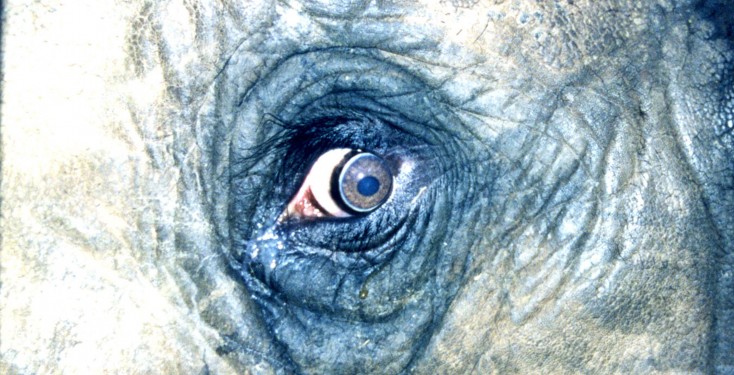Why self-regulating the use of animals in circuses cannot work
In the past decades, Animal Defenders International has shown time and time again that circuses cannot enforce animal welfare standards.

- 1. Circuses have shown that they cannot enforce any welfare standards on their own
In the past decades, Animal Defenders International has shown time and time again that circuses cannot enforce animal welfare standards. 50% of the circuses that have wild animals in the UK, have been found to have poor management practices, which have allowed abuse of their animals. ADI’s investigations on the use of animals in UK circuses in 1998, 2002, 2009 and 2011 show poor husbandry, ill health and shocking abuse.
These incidents show that self-policing through bodies such the Association of Circus Proprietors (ACP) or Performing Animal Welfare Standards International (PAWSI) have failed to protect animals, raise standards of welfare, or prevent abuse.
- 2. Standards proposed by the circus industry are inappropriate and adverse to animal welfare
The Association of Circus Proprietors guidelines allow the regular use of chains for elephants, while British & Irish Association of Zoos and Aquariums (BIAZA) guidelines make clear that: “extended period of inactivity leads to boredom and stereotypic behaviours. Such chaining practices are indefensible on welfare grounds. Elephants MUST not be routinely chained for periods in excess of three out of 24 hours.”
PAWSI’s proposed Animal Welfare (Circuses) Code of Welfare 2006 allows the use of chains for elephant for the whole night, on two legs, and the tethering of primates. PAWSI also allows the use of electric prods against animals.
- 3. The public and local authorities overwhelmingly want a ban on animals in circuses
A recent Yougov poll released by ADI in May 2011 reveals that an overwhelming 72% of the public backs a ban on wild animals in circuses, with only 8% opposing it. These figures confirm previous opinion polls. Defra’s public consultation on circus animals found that 94.5% of respondents want a ban. More than 200 local councils have already prohibited animal circuses from coming on their land.
- 4. Taxpayers will have to pay for the cost of implementing self-regulation
The circus industry has no regulatory governing body for the implementation of an accredited self-regulation system. Defra mentioned said that: “Our understanding is that PAWSI would not want to regulate and do not believe it feasible to regulate circuses alone”. The ACP does not represent all the circuses.
As a consequence UK taxpayers would eventually have to bear the costs of enforcement and inspection of any self-regulation system, despite the fact that the British public overwhelmingly opposes self-regulation. Any circus self-regulatory standards would have to be approved and monitored by the United Kingdom Accreditation Service (UKAS) at the cost of taxpayers. Defra acknowledged in its 2009 Impact Assessment that “whether it is financially practical to obtain UKAS accreditation for the regulation of only 38 animals is unclear.”
- 5. Self-regulation is expensive for circuses to implement
Defra’s own Impact Assessment established that self-regulation would cost up to £190 000 to circuses. It is uncertain whether animal circuses will make a commitment to carrying out these changes, especially at a time when the industry is facing economic challenges due to the continuing development of human based forms of entertainment. However, even if circuses make this investment it will not have a substantial effect in improving or ensuring animal welfare as circus animals will still endure constant travel, long journeys and a substantial amount of time in collapsible and lightweight facilities.
- 6. Self- regulation is unenforceable
With animal circuses touring the country, implementation of any sort of regulation will be very difficult to enforce. In addition, with the unlimited range of species available to circuses – some European circuses even touring with porcupines – it is impossible to see where the expertise for enforcement would come from. Self-policing bodies or officials will have to be trained in all wild animal species or have constant retraining every time a new exotic animal is imported to the country.
Another difficulty of enforcement of regulations relates to temporary staff coming from abroad to work in UK circuses. The industry employs itinerant workers and a variety of acts from around the world. This simply makes it impossible to assess the competence of handlers and animal trainers.
- 7. Defra has acknowledged the weaknesses of self-regulation in the past
The option of self-regulation has already been evaluated exhaustively by Defra in three different occasions: during the discussions of the Circus Working Group (October 2007), during the discussions on the feasibility study and the impact assessment (2008- November 2009) and as one of the core questions of Defra’s public consultation (December 2009 – March 2010). Defra has found that there is no credible circus body for circus self-regulation and this option would not give the circus industry “the motivation to constructively improve the welfare of wild animals in circuses”.
Find out more about the shocking new ADI cruelty exposé in the UK circus industry.
Photo Gallery: behind the scenes in Bobby Roberts Super Circus
